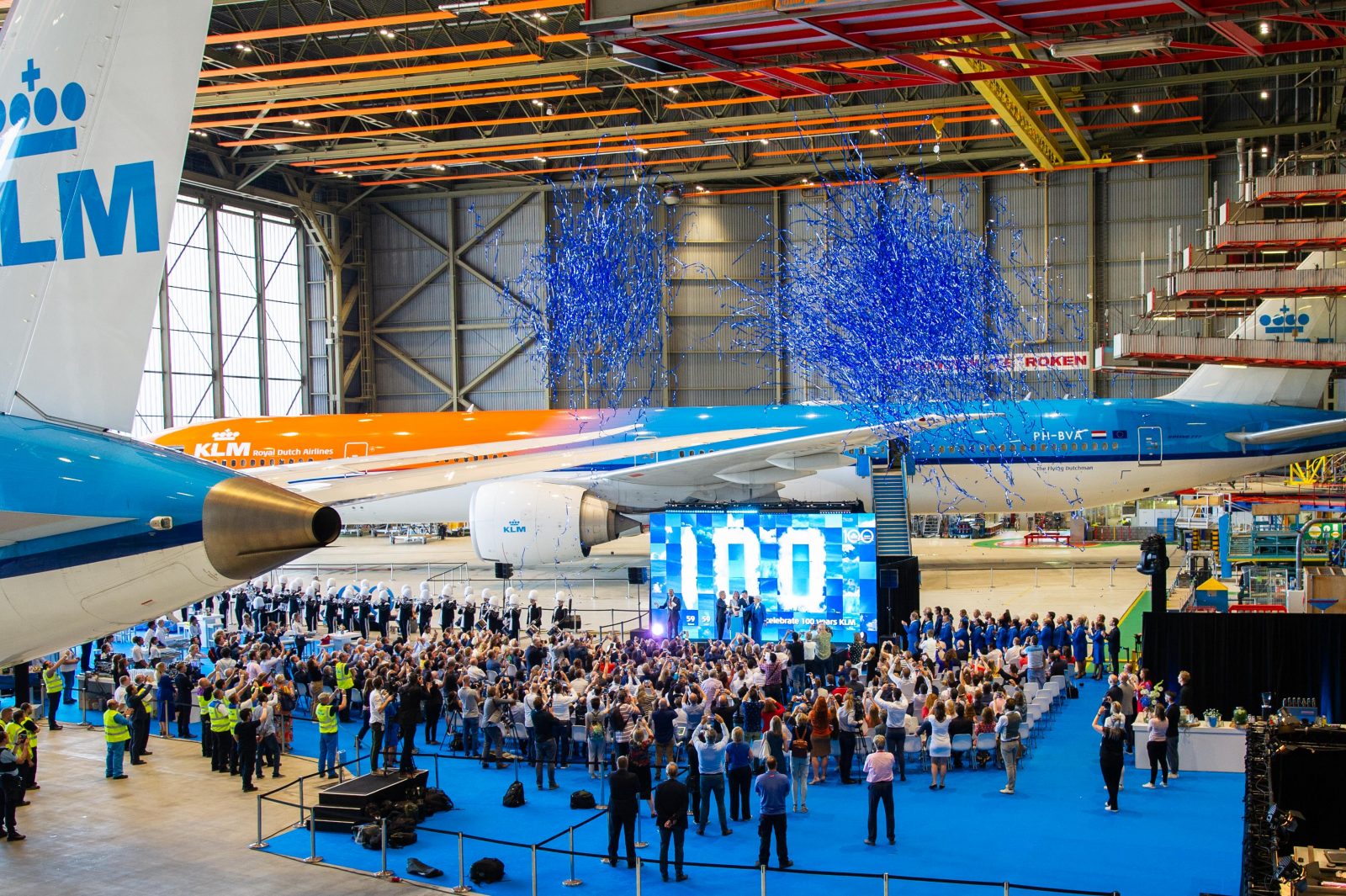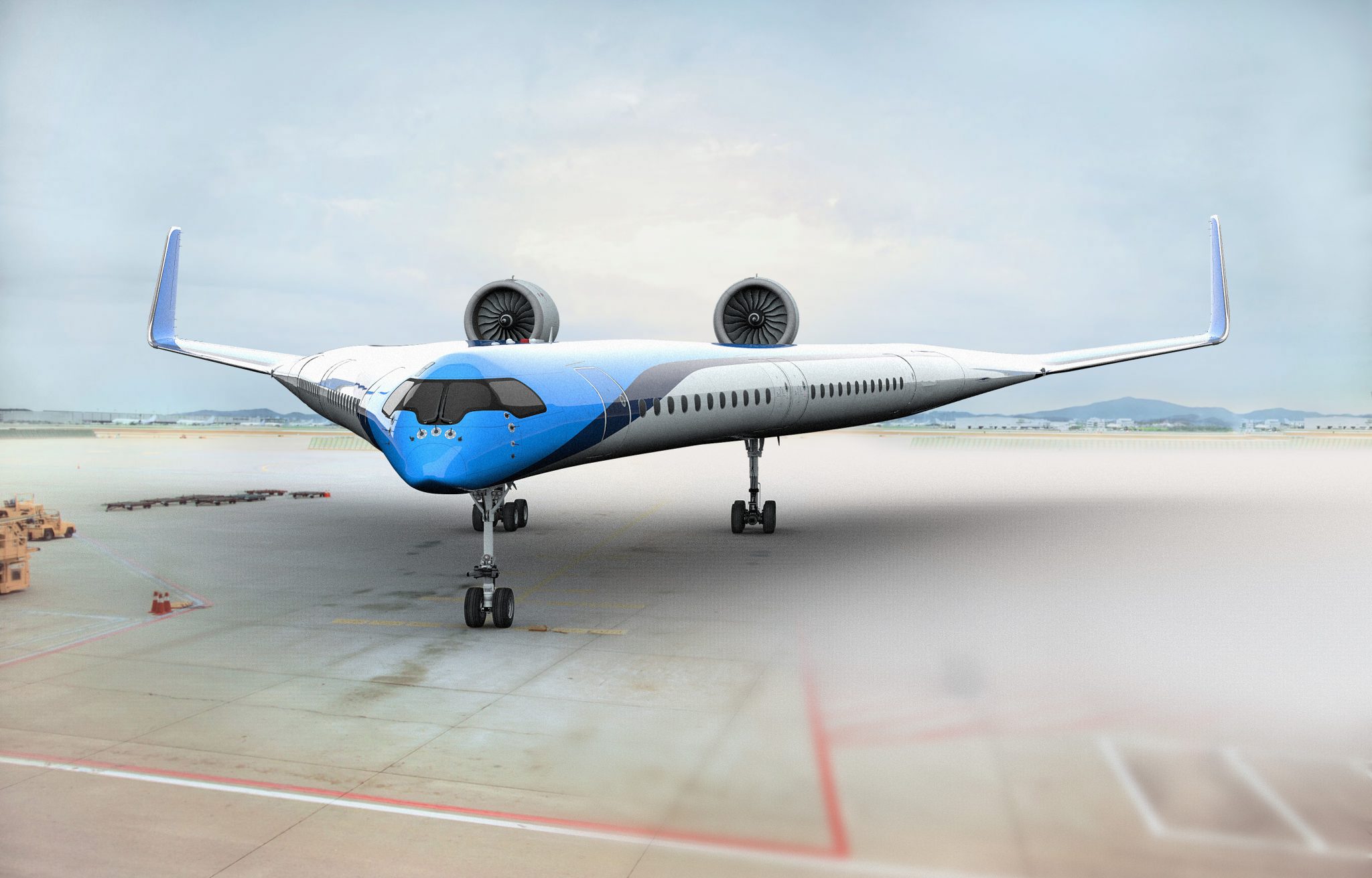
At a special event held in a KLM aircraft hangar at Amsterdam’s Schipol airport yesterday, the Dutch flag carrier counted down the final 100-day’s to its 100th birthday – KLM Royal Dutch Airlines is the oldest airline to bear the same name as from when it was created, although British Airways which actually started life as Aircraft Transport and Travel Limited is claiming to be the first airline to hit the 100-year milestone when it celebrates its centenary on 25th August.
But Saturday’s colorful event wasn’t all about celebrating KLM’s history or it’s massive growth and the positive impact it has had on the economy of the Netherlands. Instead, the overriding message was that for KLM to survive another 100-years, the world would have to start flying more responsibly.
According to KLM, aviation already accounts for between 2-3% of global man-made CO2 emissions – with a rapidly growing population and an explosion in aviation growth in countries such as China and India, that figure will likely rise in the coming years.
“We value competition, but not when it comes to the sustainable development of aviation,” explained KLM’s chief executive, Pieter Elbers.
“Starting today, we will offer all airlines our CO2ZERO carbon compensation program free of charge and free of KLM branding. And in return, we invite others to join us and share their best practices for the benefit of a more sustainable future.”
And that’s not the only plan up KLM’s sleeve to make flying more sustainable.
A few weeks ago, the airline made the headlines when it announced a tie-up with Delft University on a project to create an entirely new and sustainable type of aircraft which has been dubbed ‘The Flying V’. Using the most fuel-efficient turbofan engines that currently exist, the Flying V’s unique and aerodynamic shape would cut fuel burn by as much as 20% compared to the most-efficient long-haul aircraft on the market today.

And while the shape may appear futuristic and totally unsuitable for today’s airports, KLM says the design is based on the wingspan of the Airbus A350 – meaning that the Flying V could use airport’s without any adaptation. In fact, the Flying V is even designed to seat just as many people as the A350.
KLM certainly isn’t the only airline to talk about sustainability in the aviation industry. It’s partner, Air France has cut back short-haul domestic routes and says that high-speed trains are a far more appropriate form of environmentally friendly transport for these type of journeys.
Lufthansa, too, has mulled the idea of handing over some short-haul routes to the railways and is itself asking tough questions about how it can make it’s business more sustainable. The biggest problem, of course, is that high-speed rail just doesn’t have the same infrastructure in place across Europe as aviation.
Carsten Spohr, the chief executive of Lufthansa, has also noted that this may well be a uniquely European position to be in. Europe has benefited greatly from aviation and the rapid growth of airlines – now that it has reached a mature stage the industry can think about sustainability.
But having already reached this point doesn’t necessarily mean that European airlines can demand growing economies to the same.
Elbers, however, remains convinced that now is the time to act. “Sustainable development in aviation is not a ‘one-airline-topic’ and actual progress will only be made when we work together as an industry,” he says. Action already taken by the airline has reduced emissions per passenger by 14% compared to where they were in 2011.
Much of that reduction will have come from newer and more fuel-efficient aircraft – but for those savings to continue, you can’t escape the fact that we’ll probably be expected to fly a lot less in the coming years.
Mateusz Maszczynski honed his skills as an international flight attendant at the most prominent airline in the Middle East and has been flying ever since... most recently for a well known European airline. Matt is passionate about the aviation industry and has become an expert in passenger experience and human-centric stories. Always keeping an ear close to the ground, Matt's industry insights, analysis and news coverage is frequently relied upon by some of the biggest names in journalism.







